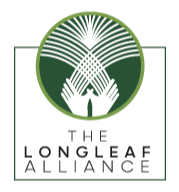Meeting the Mestads
Prior to European settlement, the Missouri Department of Conservation estimates that 15 million acres of land, about a third of the state, was tall-grass prairie. Now, less than one percent of Missouri’s prairies remain intact, making every bit of these remnant ecosystems not only a valuable asset for wildlife such as bobwhite quail, but also a future source of seed for the native plants that are a feature of healthy prairie ecosystems. The remnant prairie on Bruce and Marla’s place is an outstanding example of how conservation planning can revitalize the type of grassland habitat that is rapidly disappearing across the US.
On his first visit to the Mestad’s property, Quail Forever Senior Farm Bill Wildlife Biologist Joshua Marshall says its clearings were primarily cool season grasses. Even so, he found a variety of native plants such as wild quinine, roundhead lespedeza, pale purple coneflower, and rough blazing star. The presence of these native plants were an indication that a seed bank of prairie species still existed in the soil and that given the right conditions, that dormant prairie could stand a chance of coming back to life.
“Finding a remnant prairie such as the Mestad’s, is critically important because only a small percentage of original remnant prairies exist in Missouri,” says Marshall. “There are many prairie obligate species, such as the eared false foxglove, that rely on the unique underground ecosystem of remnant prairie soils and specific prairie plants to complete their life cycle. Many native species can be reintroduced through plantings, but there are also several that, despite our best efforts, have trouble being restored. We have to rely on these remnant sites to host these species so we can preserve them on our landscape and study them so that one day we may be able to restore them. There are also many species of insects and wildlife that rely on prairie plants and if the prairies disappear from the landscape so do they.”
It’s not just remnant prairie plants that have been making a comeback on their property either. Quail have returned and the Mestads report hearing their iconic call every year.
“In 2019, Bruce and Marla didn’t have any quail on their property and now they hear them every year. Other wildlife such as woodcocks, turkeys, deer and monarchs all utilize the excellent habitat they are restoring. New native plants are seen each year and throughout the growing season providing critical habitat for declining species such and bumble bees and monarch butterflies.”
The Mestad’s still face several management challenges on their property, which they are addressing through USDA's Environmental Quality Incentives (EQIP) program and planned improvements to the property include reducing woody encroachment on the edges of openings and treating invasive species such as autumn olive and white poplar. They also employ a regular prescribed burn schedule to assist in suppressing undesirable plants and maintaining the health of their prairie.
.
Bruce and Marla are founding members and active supporters of the Green Hills Pheasants and Quail Forever chapter and support conservation projects throughout the Unionville Community. Land management workshops hosted on their property have also seen outstanding attendance.
“They truly are magnificent people who give and ask nothing in return,” says Marshall. “They work hard in their community talking to the city about how to utilize natives in their odd areas or city parks. They were strong supporters of the Green Hills chapter assisting the school with a 6-acre monarch planting. It’s not just the wildlife on their 29 acres that benefit from the hard work and dedication of Bruce and Marla, it is their entire Unionville Community.”
The Mestad’s property is an excellent example of how high-quality habitat makes all the difference for bolstering wildlife. Improvements made to benefit quail have an outsized positive impact for all the native species that would have traditionally inhabited the tallgrass prairies of the Show Me State.
Landowners interested in restoring prairie or improving quail habitat in northern Missouri should contact Joshua Marhsall at jmarshall@quailforever.org or 660-425-2770.
More information about EQIP and other conservation programs available to landowners through Working Lands for Wildlife can be found here.


























